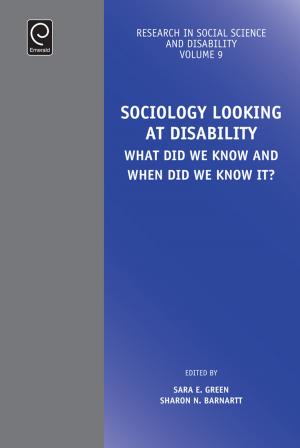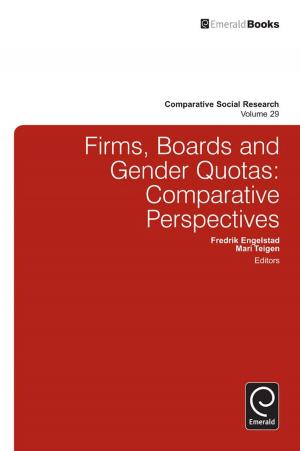Black Female Undergraduates on Campus
Successes and Challenges
Nonfiction, Reference & Language, Education & Teaching, Higher Education, Social & Cultural Studies, Social Science| Author: | Henry T. Frierson | ISBN: | 9781780525037 |
| Publisher: | Emerald Group Publishing Limited | Publication: | January 5, 2012 |
| Imprint: | Emerald Group Publishing Limited | Language: | English |
| Author: | Henry T. Frierson |
| ISBN: | 9781780525037 |
| Publisher: | Emerald Group Publishing Limited |
| Publication: | January 5, 2012 |
| Imprint: | Emerald Group Publishing Limited |
| Language: | English |
Since 1976, increased attention has been paid to the diminishing numbers of Black males in higher education, and rightly so: the total numerical enrollments of Black female undergraduates has outstripped their male counterparts by a factor of nearly 2 to 1. Since intervention, however, the enrollment growth rate among Black males (60 per cent) exceeded that of Black females (40 per cent) (NCES, 2008). Needless to say, this good news was welcomed by many. However, as Cole & Guy-Sheftall (2003) have pointed out, it may be misguided to assume that improving the status of black men will single-handedly solve all the complex problems facing African American communities. Are we indirectly neglecting Black females? And what of their future? The purpose of "Black Female Undergraduates on Campus" is to identify both successes and challenges faced by Black female students accessing and matriculating through institutions of higher education. In illuminating the interactive complexities between persons and place, this volume is aimed toward garnering an understanding of the educational trajectories and experiences of Black females, independent of and in comparison to their peers. Special attention is paid to women pursuing careers in the high demand fields of teacher education and STEM.
Since 1976, increased attention has been paid to the diminishing numbers of Black males in higher education, and rightly so: the total numerical enrollments of Black female undergraduates has outstripped their male counterparts by a factor of nearly 2 to 1. Since intervention, however, the enrollment growth rate among Black males (60 per cent) exceeded that of Black females (40 per cent) (NCES, 2008). Needless to say, this good news was welcomed by many. However, as Cole & Guy-Sheftall (2003) have pointed out, it may be misguided to assume that improving the status of black men will single-handedly solve all the complex problems facing African American communities. Are we indirectly neglecting Black females? And what of their future? The purpose of "Black Female Undergraduates on Campus" is to identify both successes and challenges faced by Black female students accessing and matriculating through institutions of higher education. In illuminating the interactive complexities between persons and place, this volume is aimed toward garnering an understanding of the educational trajectories and experiences of Black females, independent of and in comparison to their peers. Special attention is paid to women pursuing careers in the high demand fields of teacher education and STEM.















